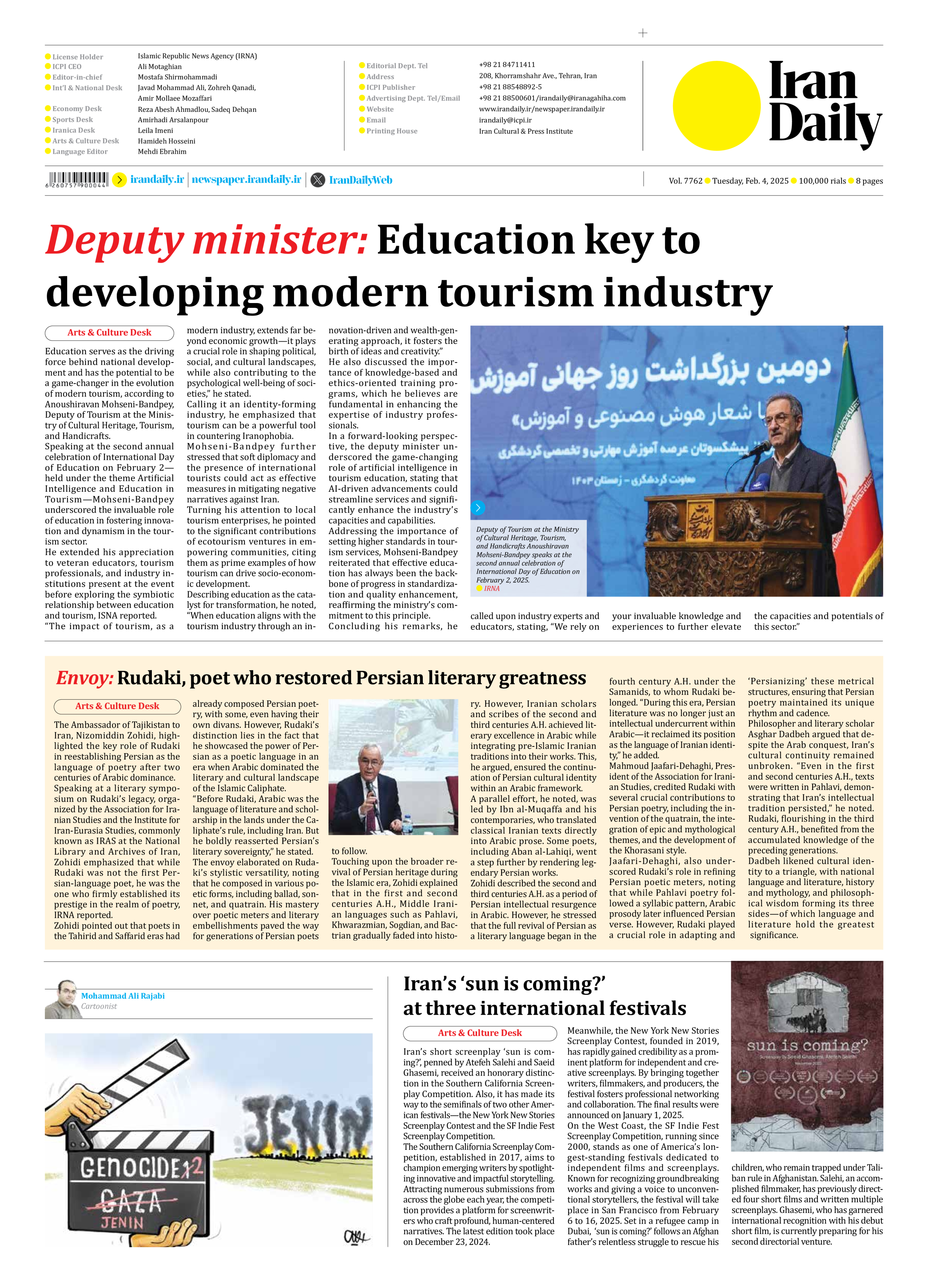
Envoy: Rudaki, poet who restored Persian literary greatness
The Ambassador of Tajikistan to Iran, Nizomiddin Zohidi, highlighted the key role of Rudaki in reestablishing Persian as the language of poetry after two centuries of Arabic dominance.
Speaking at a literary symposium on Rudaki’s legacy, organized by the Association for Iranian Studies and the Institute for Iran-Eurasia Studies, commonly known as IRAS at the National Library and Archives of Iran, Zohidi emphasized that while Rudaki was not the first Persian-language poet, he was the one who firmly established its prestige in the realm of poetry, IRNA reported.
Zohidi pointed out that poets in the Tahirid and Saffarid eras had already composed Persian poetry, with some, even having their own divans. However, Rudaki’s distinction lies in the fact that he showcased the power of Persian as a poetic language in an era when Arabic dominated the literary and cultural landscape of the Islamic Caliphate.
“Before Rudaki, Arabic was the language of literature and scholarship in the lands under the Caliphate’s rule, including Iran. But he boldly reasserted Persian’s literary sovereignty,” he stated.
The envoy elaborated on Rudaki’s stylistic versatility, noting that he composed in various poetic forms, including ballad, sonnet, and quatrain. His mastery over poetic meters and literary embellishments paved the way for generations of Persian poets to follow.
Touching upon the broader revival of Persian heritage during the Islamic era, Zohidi explained that in the first and second centuries A.H., Middle Iranian languages such as Pahlavi, Khwarazmian, Sogdian, and Bactrian gradually faded into history. However, Iranian scholars and scribes of the second and third centuries A.H. achieved literary excellence in Arabic while integrating pre-Islamic Iranian traditions into their works. This, he argued, ensured the continuation of Persian cultural identity within an Arabic framework.
A parallel effort, he noted, was led by Ibn al-Muqaffa and his contemporaries, who translated classical Iranian texts directly into Arabic prose. Some poets, including Aban al-Lahiqi, went a step further by rendering legendary Persian works.
Zohidi described the second and third centuries A.H. as a period of Persian intellectual resurgence in Arabic. However, he stressed that the full revival of Persian as a literary language began in the fourth century A.H. under the Samanids, to whom Rudaki belonged. “During this era, Persian literature was no longer just an intellectual undercurrent within Arabic—it reclaimed its position as the language of Iranian identity,” he added.
Mahmoud Jaafari-Dehaghi, President of the Association for Iranian Studies, credited Rudaki with several crucial contributions to Persian poetry, including the invention of the quatrain, the integration of epic and mythological themes, and the development of the Khorasani style.
Jaafari-Dehaghi, also underscored Rudaki’s role in refining Persian poetic meters, noting that while Pahlavi poetry followed a syllabic pattern, Arabic prosody later influenced Persian verse. However, Rudaki played a crucial role in adapting and ‘Persianizing’ these metrical structures, ensuring that Persian poetry maintained its unique rhythm and cadence.
Philosopher and literary scholar Asghar Dadbeh argued that despite the Arab conquest, Iran’s cultural continuity remained unbroken. “Even in the first and second centuries A.H., texts were written in Pahlavi, demonstrating that Iran’s intellectual tradition persisted,” he noted. Rudaki, flourishing in the third century A.H., benefited from the accumulated knowledge of the preceding generations.
Dadbeh likened cultural identity to a triangle, with national language and literature, history and mythology, and philosophical wisdom forming its three sides—of which language and literature hold the greatest
significance.







